|
Justin Adrian Chan
ARTIFACT
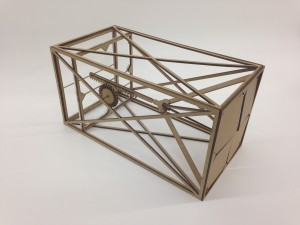 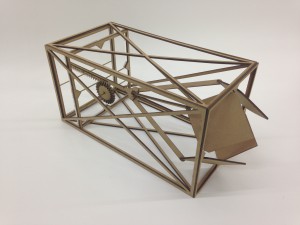
Transformable Modular Architecture, Experimental Prototyping,
Justin Adrian Chan, MArch1
WHAT?
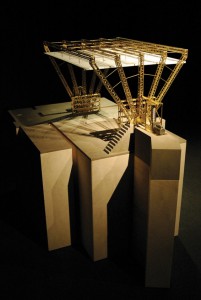 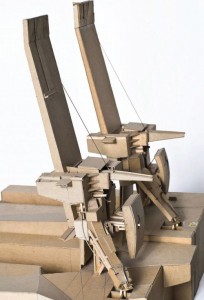
Machine #3.1, James Carrigan
In the current contemporary architectural era we live in today, the scarcity of land is becoming a growing problem in many first world countries. Cities dominated by static building forms are not accommodating with the population’s needs. Kronenburg (1999) said that “In a society that’s making more stringent demands on the physical environment and where the surrounding economic, social and cultures climate is in a state of constant and dramatic flux, a form of architecture that can respond to change and that is sensitive to widely differing needs is required”.
In recent years, architects have begun to design transformable/responsive/movable façades that could adapt to different environments. In order that structures are able to truly adapt and respond to climates, social functions, human interactions external and internally, the very fabric of the building components will have to be reconsidered and redesigned so that space can be displaceable, deformable and expandable.
Keywords: Kinetic, Connection, Transformable, Mechanisms, Dynamic, Deployable, Responsive, Tensile, Tectonic.
WHY?
 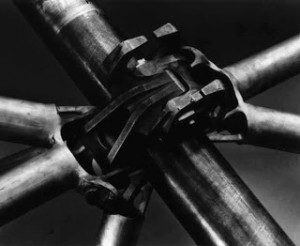
Joinery Connections, Zuk and Clark
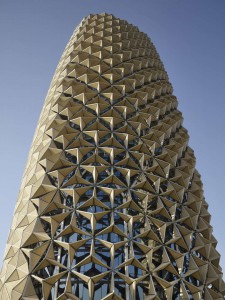
Al Bahr Towers, Aedas
During the ‘60s and ‘70s, William Zuk and Roger H. Clark believed that traditional architecture should be transformed in accordance with the changing environmental needs. Architecture should not be static objects fixed to the earth. They, therefore, introduced the philosophy of kinetic architecture which is adaptive to this changing need. Unfortunately their theory involved a lot of complex mechanical components that were heavy and consumed much energy. “Since the ‘soft kinetic’ approach of architecture introduced after the ‘70s, there has not been much progress in this experiment and research area of architecture”. Negroponte, 1975.
Over the past two decades, the advance in sensor technology has aided architects and engineers tremendously in their design of dynamic building envelopes. The result is that inhabitants feel more comfortable and energy can be conserved and harvested as well.
The aim of this thesis is to formulate a new approach to change and optimise space within a building based on its need. Different materials, tectonics, kinetic connections of building components etc, will be analysed, deconstructed and reassembled in a way where space, envelope and structure of the building can be further integrated.
HOW?
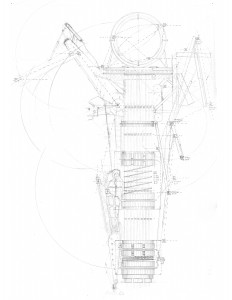 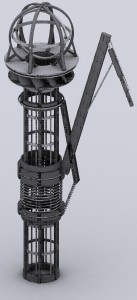
Fluvial Prototype,
Justin Adrian Chan, BArch3
STEP 1: To understand how transformable building works on the whole, I divide the building components into:
• Moving mechanisms—movement principles, movable connections, control means
• Load bearing structures—kinetic components, self-erecting structures, deformable structures, fixation and foundation
• Surface components—materials, joinery, insulation systems
STEP 2: By combining the above components in different ways, new hybrid small scale systems/prototypes can be built and tested to there limitations and performances. How the systems respond and transform with space can then be evaluated.
STEP 3: Together with the design philosophy and application of kinetic components on different building topologies, the relationship between transformable space, building and human interactions can be further integrated.
BIBLIOGRAPHY
1. William Zuk and Roger Clark, 1970, Kinetic Architecture, New York: Van Nostrand Reinhold
2. Robert Kronenburg, 2007, Flexible: Architecture that Responds to Change, London: Laurence King Publishers
3. Russell Fortmeyer and Charles F. Linn, 2014, Kinetic Architecture: Designs for Active Envelopes, Image Publishing
4. Carolina De Marco Werner, 2013, Transformable and transportable architecture: analysis of buildings components and strategies for project design, Universitat Politècnica de Catalunya
5. Daniel Rosenberg, 2010, Indeterminate Architecture: Scissor Pair Transformable Structures, Massachusetts Institute of Technology
|